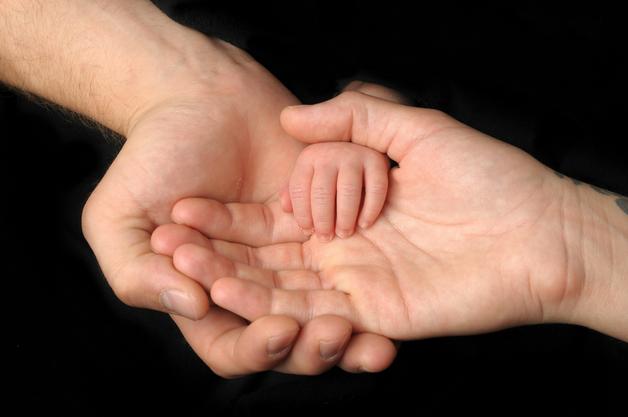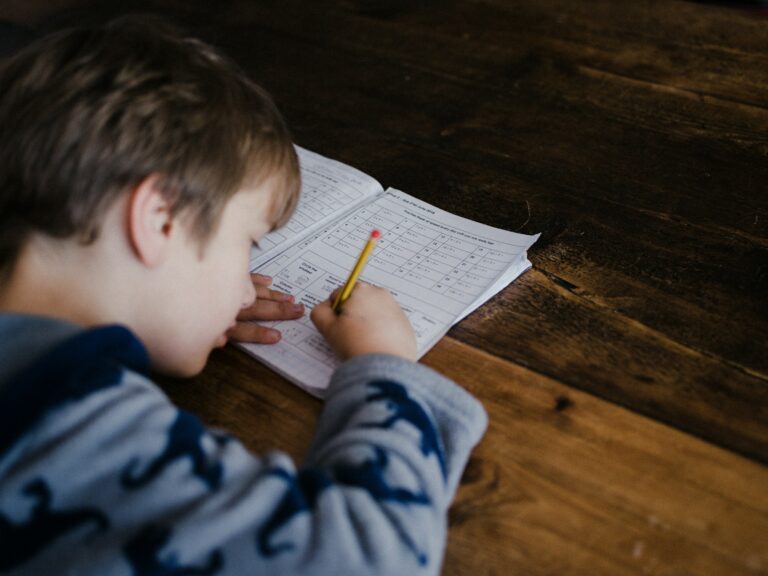Hand, foot and mouth disease often surfaces without warning—suddenly, your toddler is refusing food, a fever rises, and strange little blisters dot tiny palms or feet. Why does this illness seem to ripple through childcare centers at the speed of light? For parents, the confusion can be overwhelming. How contagious is it really? How can you comfort a distressed child who won’t drink a sip? As you navigate these stressful moments, a balanced, science-based approach makes all the difference. What actually is hand, foot and mouth disease, and why does it target young children so persistently? Let’s explore its causes, symptoms, and supportive care, while uncovering science-backed prevention and clarifying what’s actually worth worrying about.
What Is Hand, Foot and Mouth Disease?
Hand, foot and mouth disease—frequently abbreviated to HFMD—is a widespread viral illness. While adults can certainly contract it, the highest incidence is among toddlers and preschoolers. The name comes from its telltale signs: mouth sores, together with a rash and blisters appearing predominantly on the hands and feet (though sometimes the buttocks and legs join in).
What’s behind this pattern? The main culprits are non-polio enteroviruses—predominantly coxsackievirus A16 and enterovirus 71, recognizable names for healthcare professionals but perhaps perplexing for families. Unlike “foot-and-mouth disease,” a livestock condition, hand, foot and mouth disease is strictly a human issue—no connection with animals, despite the similar name.
Contagion thrives where children gather: daycares, playgrounds, and preschool classrooms. Immunity develops to each unique viral strain, but with several variations in circulation, a child may experience this illness more than once.
How Does Hand, Foot and Mouth Disease Spread?
Contact. That word, so simple yet so central. Hand, foot and mouth disease is efficient—a shimmer of saliva on a toy, respiratory droplets from a cough, or the microscopic residue left on surfaces after diaper changes can all harbor the virus. Infected stool remains loaded with enterovirus particles for weeks. Even after a child seems well, viral shedding—that covert release of virus through bodily fluids—may continue silently.
Curious hands, constant mouthing of toys, and little ones still mastering hygiene offer hand, foot and mouth disease ample opportunity to circulate. The virus is particularly persistent on hard surfaces and shared playthings, making routine disinfection a practical necessity. Notably, even asymptomatic children and adults are able to unknowingly pass the virus to others.
Symptoms: What Parents Might Notice
In Children
The first warning sign typically arrives three to seven days after exposure—a fever appears, perhaps mild at first (hovering around 100.4°F/38°C), and often accompanied by unexplained tiredness or a sore throat. Appetite dwindles. Irritability peaks.
Then, hand, foot and mouth disease reveals its signature:
- Painful ulcers or sores blossom inside the mouth, especially on the tongue, gums, and inside cheeks. The discomfort can lead to drooling (especially in toddlers), refusals to eat, and sometimes outright distress during meals.
- Rash and blisters surface on the palms, soles, fingers, and toes. Red, sometimes surrounded by a halo, these blisters may also erupt on knees, buttocks, or the genital area. In most cases, they don’t itch, but their tenderness is unmistakable if ruptured.
- Some experience swollen lymph nodes, a slight runny nose, cough, or even mild diarrhea. An odd symptom, temporary nail loss (medically termed onychomadesis), has been reported several weeks after illness but typically resolves on its own.
Children with eczema are at risk of clustered lesions on already sensitive skin.
In Adults
While adults exhibit greater resistance, infection isn’t impossible. When symptoms present, they are frequently milder: low-grade fever, tiredness, and familiar blisters or mouth sores. Yet, perhaps the greatest concern? Asymptomatic adults often serve as unnoticed transmitters in family clusters.
Diagnosing Hand, Foot and Mouth Disease: What Do Doctors Look For?
Testing is rarely required. Pediatricians rely heavily on the characteristic clinical presentation: a combination of fever, mouth ulcers, and the classic non-itchy rash on the hands and feet. Recent outbreaks at daycare or close contact with sick children can serve as clues.
Distinguishing hand, foot and mouth disease from lookalikes offers a fascinating glimpse into the diagnostic process:
- Chickenpox erupts with intensely itchy, varying rashes—quite unlike the more predictable spots of HFMD.
- Herpangina, another enterovirus infection, causes mouth ulcers confined to the throat, lacking the hand and feet rash.
- Impetigo, a bacterial skin infection, involves crusty sores, distinct in texture and course.
Laboratory tests—such as a throat or stool swab for enterovirus detection—are reserved for severe or ambiguous cases.
Caring for Your Child at Home: Comfort First
No parent relishes seeing their child silent and miserable. The reality? There’s no direct cure for hand, foot and mouth disease; instead, management is all about symptomatic relief and preventing complications.
- Reducing fever and pain: Use age-appropriate doses of acetaminophen (paracetamol) or ibuprofen. Aspirin, it’s worth repeating, should not be administered to children.
- Hydration: This cannot be emphasized enough. Soothe mouth pain with cold liquids or soft foods—think yogurt, ice cream, or gently flavored popsicles (but avoid the acidic or spicy). Children especially vulnerable to dehydration must be monitored closely; dry lips, scant urination, or unusual lethargy are immediate red flags.
- Blister care: Blisters heal best if left undisturbed. Resist the urge to pop them. Gentle cleansing and keeping the area dry reduce infection risk.
- Rest: Fatigue lingers, and children may crave sleep—honor those frequent naps and restful pauses.
Most children transition from miserable to mended in about a week. When to seek medical input? If your child struggles to swallow, shows little interest in fluids, or exhibits concerning symptoms such as persistent fever or reduced consciousness, prompt professional evaluation is essential.
Prevention: Science-Based Strategies to Protect Your Family
Hand, foot and mouth disease thrives on overlooked moments. Yet, practical steps can tip the odds in your family’s favor:
- Vigilant handwashing—lathering with soap after diaper changes, before meals, and post-playground excursions. Teach, model, and when necessary, supervise.
- Disinfection of shared objects and surfaces—wipes and routine cleaning of toys, door handles, and electronic devices can dramatically reduce viral particles.
- Avoiding the sharing of personal items—from pacifiers to utensils and towels.
- Keeping sick children home—especially while feverish or if blisters are moist. A return to normal activities is safest when your child has been fever-free for at least 24 hours and blisters have crusted or healed.
- Sibling squabbles aren’t just a source of stress—they’re a vector for spreading infection. Encouraging hand hygiene for all household members builds a shield of protection.
No universally available vaccine exists in most countries, although targeted vaccination programs against enterovirus 71 show promise in specific regions like China.
When to Seek Further Help: Rare Complications and Medical Attention
While hand, foot and mouth disease is overwhelmingly a mild, self-limited illness, it pays to be alert—dehydration, secondary bacterial infection of blisters, or rare neurological complications (such as viral meningitis or encephalitis) may develop.
Is your child unable to drink, listless, or despondent? Are there seizures, neck stiffness, or breathing difficulties? Swift medical intervention is warranted in these situations. Thankfully, these scenarios are exceedingly rare, but an abundance of caution never hurts.
Temporary nail loss—a late-appearing and completely benign consequence—may startle, but it resolves spontaneously.
Hand, Foot and Mouth Disease: Myths, Facts, and Ongoing Research
Antibiotics? Not effective. Hand, foot and mouth disease requires supportive care only. The misconception that antibiotics speed recovery lingers, yet clear communication with your healthcare provider can demystify this process.
“Can pets catch it?” A frequent question—and the answer is a definitive no. Hand, foot and mouth disease is a human virus, unrelated to the livestock illness often confused with it.
Exciting research on vaccines continues, with innovative approaches targeting severe enterovirus 71 strains already in use in certain countries. Broader protection for all strains remains a sought-after scientific challenge.
Key Takeaways
- Hand, foot and mouth disease is typically self-resolving within seven to ten days, with symptoms centered around fever, mouth ulcers, and a distinctive rash on hands, feet, and sometimes the buttocks.
- Supportive, science-based care focuses on pain relief, hydration, gentle foods, and blister care—vigilant hygiene and home isolation remain the mainstays of prevention.
- Remember, although most cases are mild, persistent high fever, dehydration, or any signs of lethargy or neurological changes deserve prompt medical evaluation.
- No global vaccine exists yet, but research is accelerating and targeted vaccinations are available in some areas. Effective hand hygiene and regular disinfection provide robust defense.
- If you wish to receive personalized health guidance, free symptom questionnaires, or additional evidence-based advice for your child, you can download the Heloa app.
Parents juggle a world of uncertainties. With knowledge, empathy, and tools to respond, hand, foot and mouth disease becomes less of a mystery—and far less intimidating.
Questions Parents Ask
Can older children or adults get hand, foot and mouth disease?
Absolutely, even though it is more frequent among younger children, older children and adults can sometimes contract hand, foot and mouth disease as well. In adults, symptoms tend to be milder or may even go unnoticed, but they remain contagious and can pass the virus to others. This is why maintaining good hygiene for everyone in the household, regardless of age, is valuable in limiting the spread.
How do I know when my child is recovering from hand, foot and mouth disease?
Reassuringly, recovery often begins once your child’s fever lowers and their energy gradually returns. Blisters and rashes will start to heal—as they dry and fade, your child should become more comfortable eating and drinking. Most children recover fully within a week to ten days, and lingering fatigue is normal as they regain strength.
Are there any specific creams or products that help with the skin discomfort?
There is no treatment that speeds up the healing of blisters, but you can try gentle, fragrance-free moisturizers or creams if your child’s skin feels dry or sensitive. It’s best to avoid popping the blisters, as this natural healing process helps prevent any risk of skin infection. If discomfort becomes pronounced or you notice signs of infection, a healthcare professional can suggest additional soothing options. Remember, providing extra cuddles and reassurance can do wonders for your child’s comfort!

Further reading:




